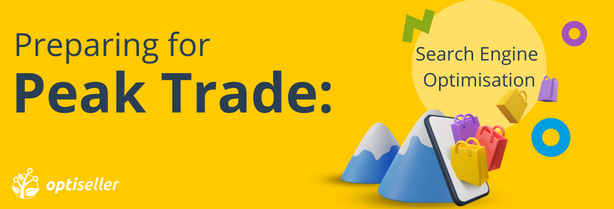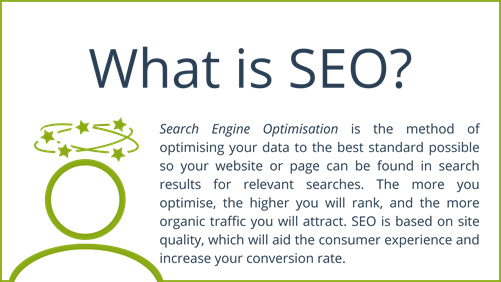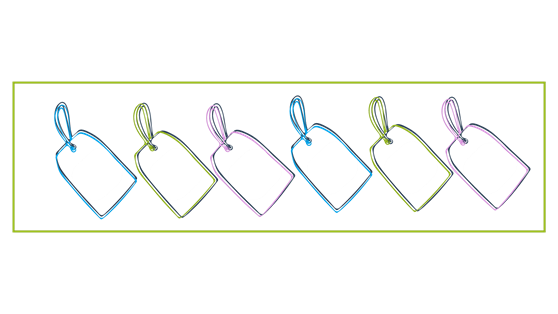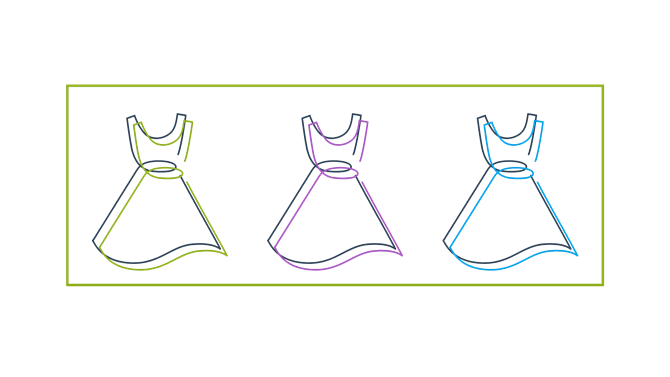 English
EnglishAsia Pacific

Peak Trade season is fast approaching and preparation time for these peak sales periods is getting longer each year as demand grows. Which is why we are bringing you all of our prepping tips now!

In the first blog of this series, we walked you through managing your inventory for Black Friday and beyond. Now it’s time to focus on search engine optimisation (SEO).
We at Optiseller believe that data drives the success of any business. The same goes for success on eBay, without good quality data and following eBay best practice, your store will fall from search or be penalised by eBay. If you are new to the world of SEO, don’t panic, we can walk you through it, you’ll be an SEO pro in no time!

How does SEO work on eBay?
Think of eBay as your search engine, your data must be accurate and relevant so the right buyers can see your listings when searching. There are a range of elements that will make all the difference when it comes to attracting qualified traffic. eBay want to create the best possible experience for buyers, so they are going to put listings in front of shoppers which meet eBay’s own ‘Best Match’ policy. Remember, eBay only make money when sellers actually sell, they want you to succeed. Conversions play a role in keeping your listings ranking high as sales history does impact the ranking of your products too. Here’s how you can boost your listing visibility while ensuring that it is found in the right places.

Categorisation
First and foremost, you need to make sure you list your items in the right category. Listing where your customers are looking in the first place may sound simple, but the variety of categories on the marketplace can make it more complicated than you would expect. eBay do automatically offer some suggestions, but take the time to consider if they are definitely the right ones for your product.
You may have an item that would fit well into more than one category, consider listing your product in two categories to boost the likelihood that the right eyes will spot your listings. Of course, you should only do so for products that are relevant in more than one category. Bear in mind there is a fee associated with this if the item sells, but it may be worth the investment.
If you’re unsure about where to list your products, check out our Category Suggester tool, available on any of our plans!

Title and Description
The title is the first thing your customers will see and will ultimately make or break a click through to your product. Your aim is to give as much information in your title as possible for example, brand, size, type, anything that will allow the customer to identify what it is you are selling, as quickly as possible. You only have a few seconds to capture a potential buyer’s attention. You are given 80 characters to give your product the best introduction you possibly can, use them wisely! At Optiseller, we recommend you use between 70 and 80 of these characters.
Additionally, you should always make sure that your product descriptions are clear and convey all the relevant information about what you are selling. Keep your descriptions concise to ensure they are mobile friendly. According to Statista, 65% of online purchases are made on a mobile device. Read the product descriptions from the point of view of the buyer, what information would you need to have confidence in a purchase? If you have any frequently asked questions, or a shipping policy, be sure they are answered in your description. It is vital to be honest with your customers and manage their expectations to avoid negative reviews and returns.
Images
Take the time to select the right images to present your products in the best light. In this age of social media, a picture truly does speak a thousand words. It only makes sense when listing a product that you take as many high-resolution pictures as you can to show the quality and condition of the product.
eBay allows up to 12 images, and we recommend you use all 12 if the images are relevant and improve the buyer experience of course. It is particularly important if an item is second hand, so customers can make up their own mind if the condition of the item suits their needs and expectations. If you use high resolution images, then eBay will also allow the zoom in feature on images, this can really make a listing stand out with products which have more detail. A new feature for eBay is that listings now support videos, and this could really boost the buyer experience! Consider a dress for example, a video could show the fit, style and movement much more than an image can!

Variation listings
If you have the same item in multiple colours, sizes or any other variant, we would absolutely recommend listing these as variants. This will do wonders for listings which are getting less traffic. As they are listed with your more popular variations, the ones which are less popular will benefit from the visits they’ll receive as a result. Most shoppers will click on the variants before settling on the one they want, so you’ll get a boost for each listing viewed. It will then rank higher as a result of this. It will also help you to avoid duplicate listings, which is against eBay policy and would impact your listings’ visibility if penalised by eBay for this avoidable breach of policy.
Item Specifics
If you have followed Optiseller for a while, you will have heard a great deal about Item Specifics and how important they are for SEO. If you are new here, let us explain:
Item Specifics are the key attributes of the product you are selling, for example, brand, size, type, colour, style. They are essential for visibility on eBay, as they ensure your listings are easily found by buyers. They help users narrow down their choices using filters on search results. By including more Item Specifics, you will not drop from relevant search results as shoppers filter for products like yours.
eBay mandate Item Specifics for certain categories, multiple times a year. If you ignore these required Item Specifics, your items will suffer. Your listings will drop from search, and you will be unable to re-list until you have added these mandated Item Specifics. Our Aspect Finder+ tool is your key to all things Item Specifics. If you’re looking for assistance in populating Item Specifics and staying ahead of mandated changes, it’s worth using!

Getting started
This may seem like a lot of work, but you will see the benefit! Pick a few to start with and build up from there. These tips are well worth adding to your selling strategy, we know it will make your job easier in the long run. Once you’ve optimised your listings, they’ll be in a healthy place to start advertising certain listings for Black Friday. Stay tuned for the next blog in this series which will focus on advertising on eBay.
To find out how Optiseller tools can help you optimise your listings, check out our plans.